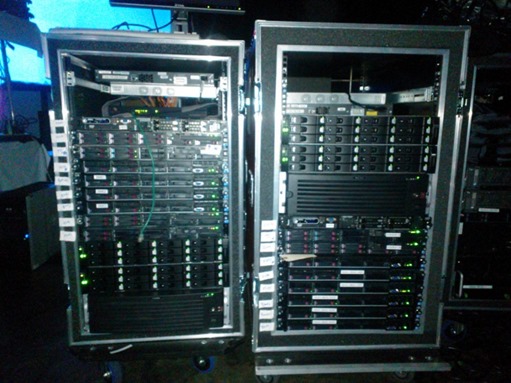Building the MMS keynote demos
It’s been an amazing week at MMS!
Every year, our team has the pleasure of being a major contributor to the success of MMS, driving the session tracks, the marketplace booths, ensuring that the content delivered is of a high quality and of course building the keynote demos ![]() .
.
This year I had the honor (and I say that with true intent) of building and producing Demos 2 and 3, and also co-owning the last part of Demo 4. There was an incredible amount of thinking, focus and time spent in the build of the environments to run these demos. It’s not that the technology was hard, or that it was difficult to configure or we wanted to do something that the product did not do. No, all of that was the easy part! The hard part is that keynote demos have a very short time to be delivered on stage (usually between 5-8 mins), and you want to show a really cool and visually appealing demo, yet still have it based in the reality of the world that our customers live in and most importantly it must be technically possible and REAL!
Let me state this very clearly on behalf of our whole team. The MMS keynote demos were real. Every single bit of it. We built it. And over a series of blog posts we’re going to tell and show you how, and explain where we optimized for speed.
So, first things first … who did what? ![]()
- The idea for Vijay’s coffee mug came from Kenon Owens (and thank you to his wife who actually made them!)
- The idea for Vijay’s video while the bare metal build was running was also Kenon’s.
- The hardware we ran the platform on (shown below) was also built out by Kenon, who was assisted by both the hardware vendors and our awesome internal technical support lab team
- The base environment we built the keynote on is the same one used for our internal field to demo off (SCDEMO) and also the Private Cloud Immersion day environment. We took a new base build of this platform with all the RTM versions installed and built out from there. This base set is provided by an internal team managed by Duane Bourgeois. There’s a few people in this team, but special thanks to Rob Willis, Charles Joy, Mark Gosson, Anders Ravnholt, Chris Childers and Shawn Gibbs for the help provided.
- Demo 1 (Infrastructure/Fabric) was built and produced by Kenon Owens
- Demo 2 (App scale and self-service) was built and produced by Adam Hall
- Demo 3 (App insight and diagnostics) was built and produced by Adam Hall
- Demo 4 (Windows Server 2012) was built and produced by Michael Leworthy
- Demo 4 (App Controller futures) was a joint effort by Kenon and Adam
So as you can see, we all had different responsibilities, and this was a true team effort.
Building and producing the demos means that we not only build the actual technology that is seen, but we also write the talk tracks. These are worked on and refined between the producer and the on stage team (Ryan and Vijay) as well as reviewed by a lot of really smart people across our greater teams to ensure we not only say the right things, but also ensure we don’t say the wrong thing and get in trouble!
So that’s the scene set, and a run down of who did what. We will write up and publish details about the hardware and each of the demos to show you what it was, how it ran, how it was configured. Everything we showed is reproducible by you (except that last App Controller demo, sorry you’ll have to wait a little while for that ![]() ).
).
We hope you enjoyed MMS!
Adam
The hardware that ran the Day 1 MMS keynote demos:
This is the team backstage just before the keynote started:

